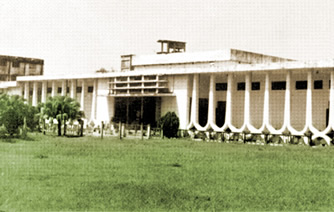Ethnological Museum
Ethnological Museum located in the Agrabad Commercial area in Chittagong. It was established in order to foster mutual understanding and fellow feeling among all the ethnic groups of Bangladesh.

Established in 1974, the ethnological museum has at this moment 11 galleries to exhibit the various aspects of lifestyle of the 29 ethnic groups of the country, including twelve ethnic groups of Chittagong hill tracts. The exhibits represent all aspects of life and activities of the ethnic groups. The exhibits have been made lively and attractive by means of maps and photographs, models, wall paintings and by artificially creating the environment in which the tribes live. Besides there are plaques containing short introductory notes.
The location of all the ethnic groups has been shown on a large map on the wall of the central hall of the museum. By the side of the map stands a typical Chakma homestead. Among important exhibits are a typical boat of the Murangs; a showcase containing the ornaments of the Marma-Murangs; a model of the Tipras; weapons, articles of day to day use and specimen of writings of the Chakmas; Manipuri dresses; materials used by the Marmas during festivities, their weaving machine and thread-wheels; axes, scissors, baskets and bamboo pipes of the Tipras; ornaments used by tribal women and a scene depicting the cow slaughter festivity of the Murangs.
The museum contains materials of a number of important tribes of India and Pakistan. Notables among them are the silver ornaments of the tribes of Swat, Sindh and Punjab; the model of a typical Punjabi woman; materials of day to day use, dresses and photographs of different tribes of the Punjab and Kafristan; weapons of Swati tribes and models of a Sindhi bride, mother and child etc. Wooden shelves, fans and flower vases of tribal origin are on display.
The establishment of the museum in Chittagong - an area rich in ethnic heritage - is a laudable venture of the Directorate of Archaeology. Two rooms were added to the museum during 1985-1995 periods. In 1996 a gallery with folk articles of the Bangla speaking people has been added. [Muhammad Abdul Baten]
